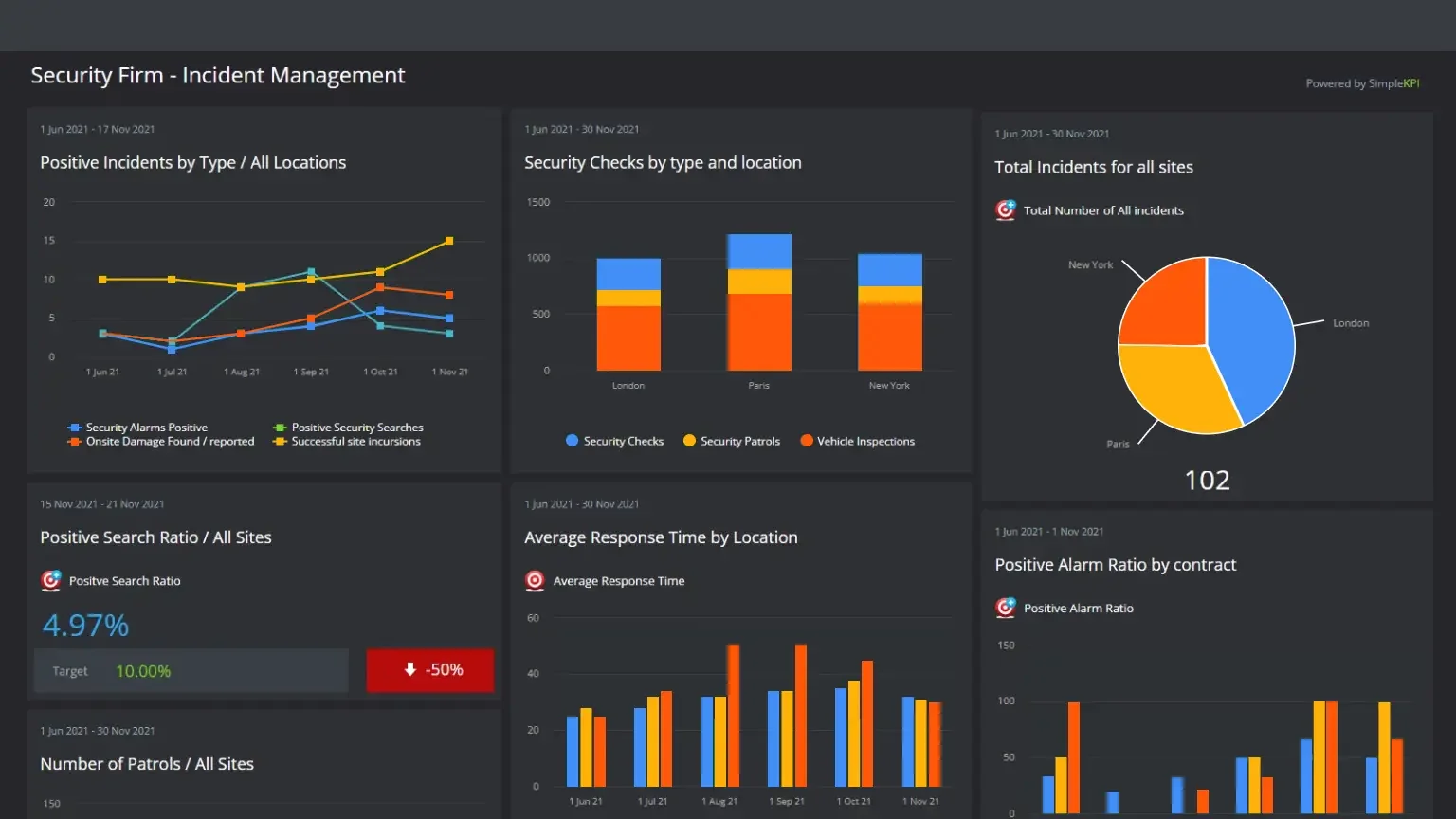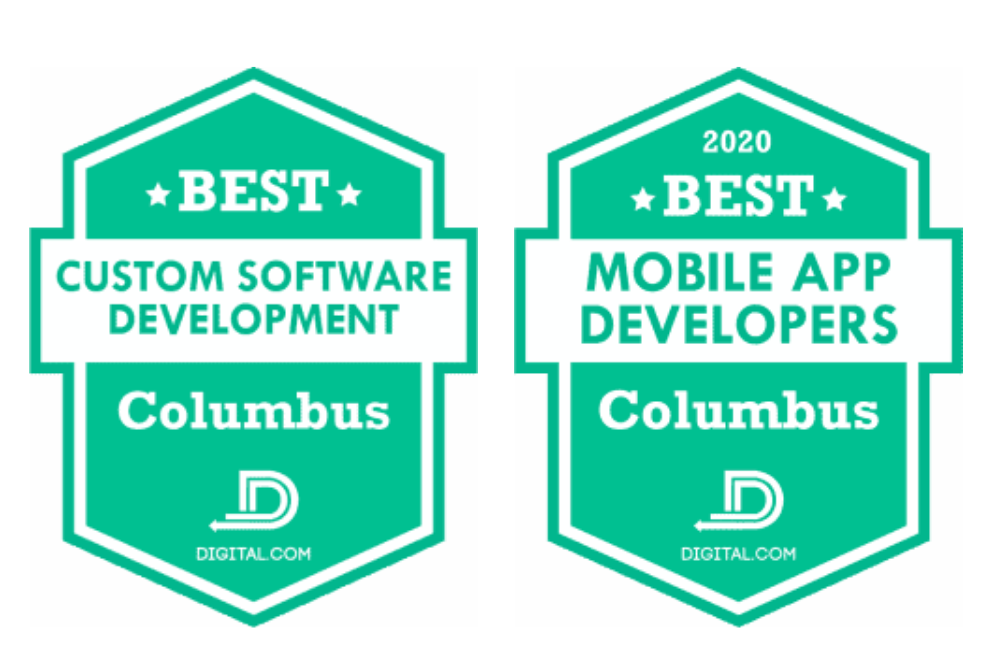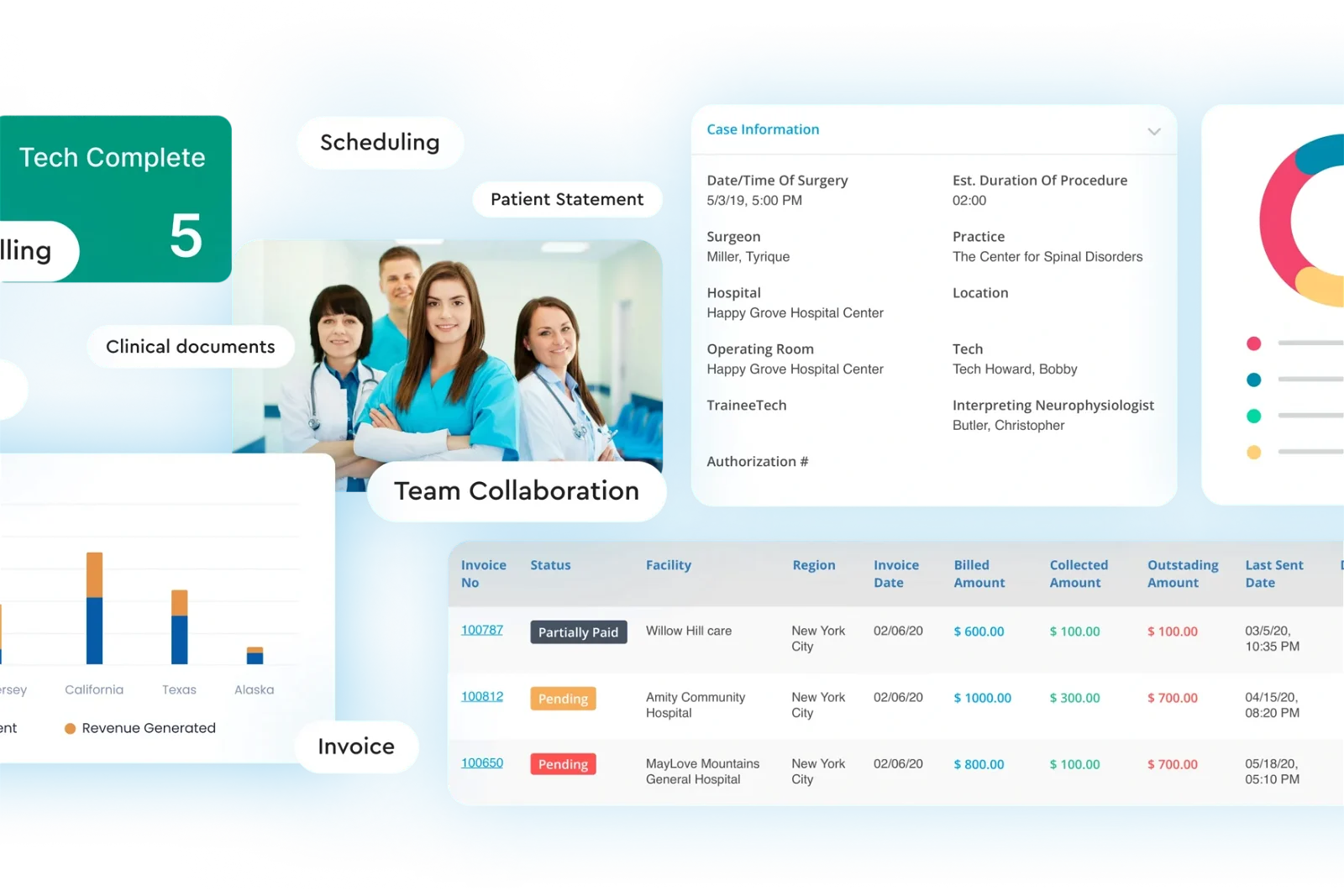Power BI, a powerful business intelligence tool by Microsoft, offers a vast number of security features and dashboards to ensure data protection, compliance, and risk mitigation.
Power BI Security Dashboards provide organizations with the tools needed to monitor, manage, and enhance the security of their data assets. From enforcing role-based access control to tracking user activities and compliance adherence, these dashboards offer visibility, transparency, and actionable insights into the organization’s data environment.
This article explores the importance of Power BI Security Dashboards, their key features, and the benefits they offer across various industries. By leveraging these dashboards, organizations can address security threats, mitigate risks, and maintain the integrity and confidentiality of their data assets.
Security Compliances in Power BI Dashboards
In Power BI, ensuring security compliance involves implementing various mechanisms to control access to data and resources. Here are the key security compliances and features related to Power BI dashboards:
- Enable Power BI Row Level Security (RLS):
- Row Level Security (RLS) in Power BI allows you to restrict access to rows of data based on user roles or filters.
- Users only see the data they have permission to access, ensuring compliance with data privacy regulations and organizational policies.
- RLS helps enforce security at the row level, ensuring that sensitive data is only accessible to authorized users.
- Column-Level Security:
- Column-Level Security in Power BI enables administrators to restrict access to specific columns within a dataset based on user roles.
- This feature allows organizations to protect sensitive data fields while still providing access to other data within the same dataset.
- Column-Level Security enhances data protection and privacy by limiting access to confidential or sensitive information.
- Power BI Object Level Security (OLS):
- Object-Level Security (OLS) in Power BI allows administrators to control access to dashboards, reports, and datasets at a granular level.
- Administrators can specify which users or groups have permission to view or edit specific Power BI objects.
- OLS helps enforce security at the object level, ensuring that only authorized users can access or modify Power BI assets.
These security compliances and features in Power BI help organizations enforce data protection, access control, and compliance with regulatory requirements. By leveraging these mechanisms, organizations can ensure that their Power BI dashboards adhere to security best practices and mitigate the risk of unauthorized access or data breaches.
Microsoft Defender for Cloud Apps for Power BI
Microsoft Defender offers real-time protection, automatic updates, and various scanning options to ensure the security of the system. It also includes features such as cloud-based protection, which helps to identify and block new and emerging threats.
- Real-time Session Controls: Implement conditional access policies for secure access and monitor user sessions in real-time.
- Anomaly Detection: Identify unusual user behavior patterns, including irregular access or sharing activities.
- Integration with Microsoft Information Protection: Classify and protect sensitive data within Power BI dashboards using sensitivity labels, ensuring compliance with organizational policies.
- Custom Activity Policies: Define rules for monitoring user activities, including unauthorized data downloads or abnormal access patterns.
- Built-in Detections: Monitor activities specific to Power BI dashboards and identify suspicious sharing or abnormal user behavior.
- Power BI Admin Role: Grant Power BI administrators access to relevant security data, providing visibility and control over security aspects of dashboards.
Power Up Your Business Intelligence with Power BI
Turn complexity into clarity with our user-friendly Power BI solutions.
Role-Based Access Control (RBAC) in Dashboard - Role-Level Security
Business owners deal with a huge risk of collecting client data and keeping it safe becomes a huge responsibility for them. One wrong move and the client data might get into the wrong hands leading to a lot of trouble and lawsuits. That’s why they always try to keep data safe by providing very limited access to their employees. But manually doing this is another big task and here Power BI RBAC is helpful. With security and privacy being the top priority in Power BI, the Role-based Access Control feature saves a lot of time and effort. With RBAC, organizations like yours can provide the amount of access they want to and to whomever they feel necessary.
They can configure the setting within Power BI according to their requirements at any time. This helps to manage user roles, permissions, and access policies effectively and easily without any hassle.
Let's take an example in Healthcare
In a healthcare organization, nurses play a vital role in patient care, requiring access to relevant medical information to deliver quality treatment and support. With Role-Based Access Control (RBAC) and Role-Level Security implemented in Power BI, nurses can efficiently access and manage patient data while maintaining strict confidentiality and compliance with healthcare regulations like HIPAA. Assigned permissions allow nurses to access patient charts, medication records, and appointment schedules, enabling them to document vital signs, administer medication, and provide essential care. Dynamic filtering ensures that nurses only see the information pertinent to their role, enhancing efficiency and focus on patient needs. Granular control allows administrators to adjust access permissions as needed, ensuring that nurses have the necessary data access while safeguarding patient privacy. By leveraging RBAC with Role-Level Security, healthcare organizations can empower nurses with the tools they need to deliver effective care while upholding the highest standards of data security and patient confidentiality.
Data Loss Prevention (DLP) in Dashboard
Organizations want to know who is accessing what information at all times because of the client data, may it be healthcare records or any other information. Security Dashboard tracks the data movement or any other sharing activity within or outside Power BI to prevent any data leaks. This allows the managers to enforce data protection policies and compliance.
Types of Power BI Security Dashboards
- Access Control Dashboard: This dashboard provides insights into user access patterns, including who has access to which datasets, reports, and dashboards. It helps administrators ensure that access privileges are appropriately configured and identify any unauthorized access attempts.
- Usage Monitoring Dashboard: This dashboard tracks usage metrics such as login attempts, active sessions, and data access patterns. It helps administrators detect unusual or suspicious activities that may indicate security breaches or unauthorized access. Monitor User Activity and Anomalies
- Data Breach Detection Dashboard: This dashboard monitors data access patterns to identify potential data breaches or security incidents. It can detect unusual data retrieval or download activities, unauthorized data access attempts, and other suspicious behaviors.
- Permission Analysis Dashboard: This dashboard provides insights into user permissions and roles within Power BI, helping administrators ensure that access rights are aligned with organizational policies and compliance requirements. It can highlight inconsistencies or excessive permissions that may pose security risks.
- Compliance Monitoring Dashboard: This dashboard tracks compliance with security standards, regulations, and internal policies. It provides visibility into adherence to security controls, data protection measures, and audit requirements, helping organizations maintain regulatory compliance and mitigate risks. Compliance Monitoring can track regulatory compliances based on different needs of different industries like HIPPA for Healthcare, GMP for Manufacturing, FERPA for Education, etc.
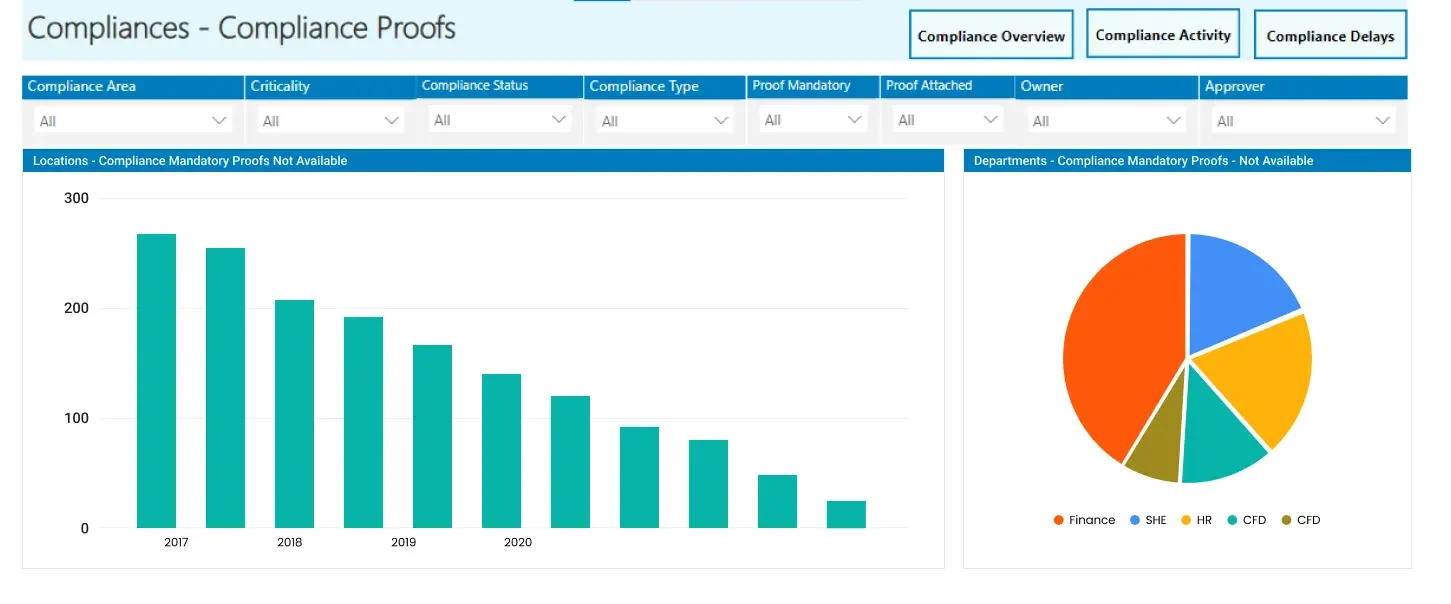
Threat Intelligence Dashboard
This dashboard integrates with external threat intelligence sources to provide insights into current cybersecurity threats and vulnerabilities relevant to the organization’s Power BI environment.
Additionally, it prioritizes risks, visualizes security metrics, and monitors user access for compliance. Integration with security tools ensures comprehensive coverage, while customizable alerts enable timely response to potential threats. This dashboard allows organizations and administrators to proactively safeguard their Power BI deployments and address emerging security risks and vulnerabilities.
Security Dashboards for Different Industries
Power BI Security Dashboards can be effectively utilized to monitor patient medical records while ensuring appropriate security access levels for various healthcare stakeholders. For instance, when a patient requests a claim from an insurance company, the insurer may need to verify the patient’s claim by accessing their medical records from a healthcare provider like ZinniaX.
In this scenario, the healthcare provider can grant permission for access, or alternatively, depending on Power BI security protocols, may prompt the patient to grant access to their records. All such permission requests, approvals, and activity logs can be conveniently displayed within Power BI Dashboards.
Furthermore, Power BI can also monitor other permissions, such as doctors accessing medical histories, patient insurance claim records, as well as personal or family allergy histories. This comprehensive monitoring ensures data security and regulatory compliance while facilitating seamless information sharing among authorized parties in the healthcare ecosystem.
To safeguard sensitive student and family information collected by admission offices, schools and colleges can implement Power BI security dashboards. These dashboards enable organizations to restrict employee access to sensitive data, such as banking information for fee payments and personal details. By providing limited access, the dashboard allows schools to monitor and track employee interactions with student information. It provides detailed activity logs, showing who accessed what information for which student and for what purpose. This level of transparency ensures accountability and helps schools maintain the confidentiality and integrity of student data.
Banking & Insurance
A Power BI dashboard swiftly generates real-time alerts upon detecting suspicious transactions, promptly notifying fraud investigators and compliance officers. These alerts provide comprehensive transaction details, including ID, amount, timestamp, location, and associated customer data, enabling investigators to conduct thorough analyses. The dashboard’s interactive visualizations empower investigators to explore transaction histories, detect anomalies, and assess risk factors efficiently, while seamless integration with external data sources enhances insights. With streamlined collaboration and transparent audit trails, the dashboard strengthens fraud detection efforts, mitigates financial risks, and ensures a secure banking environment
Why do you need Power BI Security Dashboards?
Power BI Dashboards provide utmost security allowing easy share, protection, accountability, and accessibility to its users. From providing access to only authorized users to fulfilling regulatory requirements like HIPPA, GDPR or FERPA, Power BI can do everything. Below are a few reasons why you must have Power BI Security Dashboards for better safety, protocols, and protection of sensitive information.
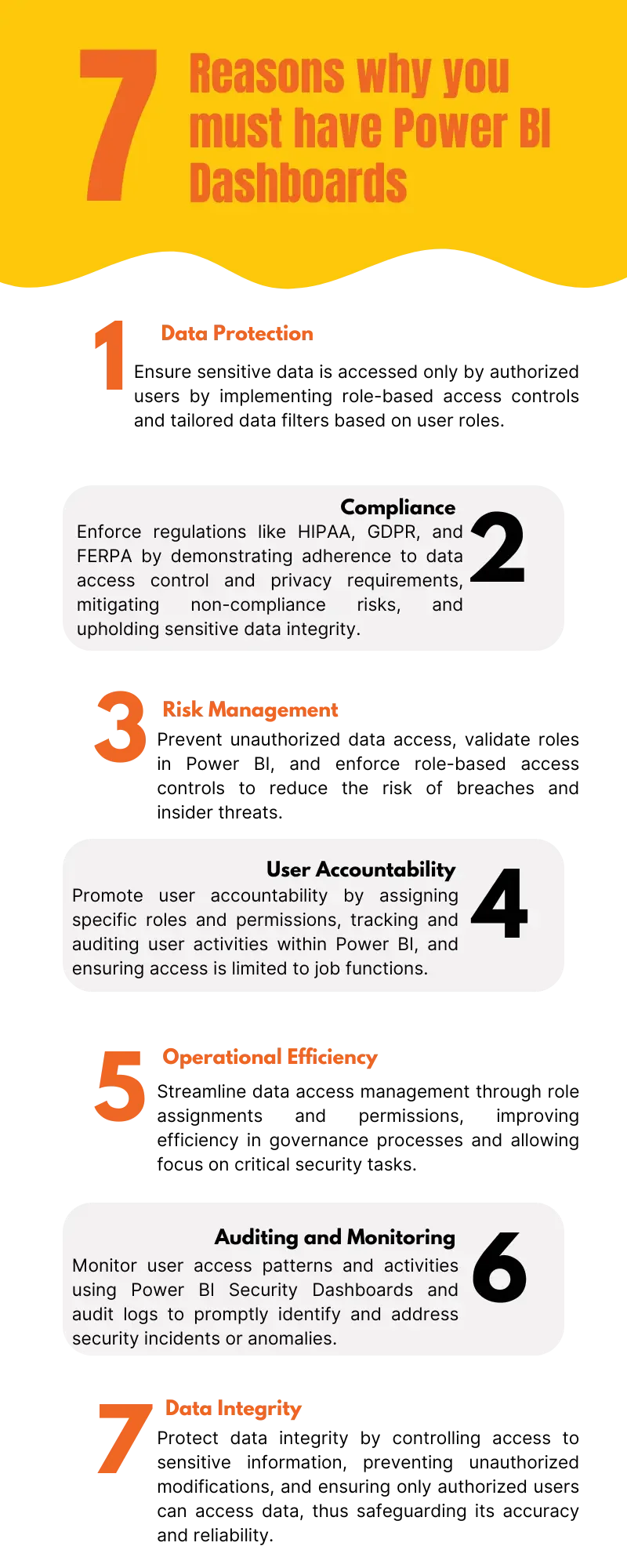
Benefits of Security Dashboards
- Visibility and Transparency: Power BI security dashboards offer SMBs visibility into their data environment, including user access patterns, permissions, and data usage. This transparency helps SMBs understand who is accessing their data, what they are doing with it, and whether any unauthorized activities are occurring.
- Risk Mitigation: By monitoring data access patterns and detecting potential security incidents, Power BI security dashboards help SMBs mitigate security risks effectively. SMBs can proactively identify and address vulnerabilities, unauthorized access attempts, and other security threats before they escalate into serious incidents.
- Compliance Management: Power BI security dashboards enable SMBs to monitor compliance with regulatory requirements and internal security policies. By tracking access controls, data protection measures, and audit trails, SMBs can demonstrate compliance with industry regulations such as GDPR, HIPAA, or PCI DSS, as well as internal security standards.
- Resource Optimization: By analyzing user access patterns and permissions, Power BI security dashboards help SMBs optimize resource allocation and improve operational efficiency. SMBs can identify inactive users, streamline access permissions, and reallocate resources based on actual usage patterns, leading to cost savings and improved productivity.
- Incident Response and Investigation: In the event of a security incident or data breach, Power BI security dashboards provide SMBs with the necessary tools to investigate and respond promptly. SMBs can analyze access logs, trace data access activities, and identify the root cause of security incidents, enabling them to take appropriate remedial actions and minimize the impact on their business operations.
- Data Protection and Privacy: Power BI security dashboards help SMBs enforce data protection and privacy measures by monitoring data access, sharing activities, and adherence to data handling policies. SMBs can identify and address data leakage risks, unauthorized data disclosures, and compliance gaps, thereby enhancing data security and protecting sensitive information.
- Proactive Security Management: By integrating with threat intelligence sources and providing real-time insights into emerging security threats, Power BI security dashboards enable SMBs to adopt a proactive approach to security management. SMBs can stay ahead of evolving cybersecurity threats, implement timely security controls, and minimize the likelihood of security breaches or data loss incidents.
Conclusion
The benefits of Power BI Security Dashboards extend across various industries, including healthcare, banking, education, and beyond. From mitigating security risks and ensuring regulatory compliance to promoting user accountability and operational efficiency, these dashboards offer a comprehensive solution for data protection and privacy.
Whether it’s monitoring user access patterns, tracking data movement, or enforcing stringent compliance measures, our Power BI Dashboards Development Services provides robust security strategies. At Sunflower Lab, we have expert Power BI developers who excel in providing the best Power BI solutions. Contact Us today and our team will be happy to assist you further.
You might also like
Stay ahead in tech with Sunflower Lab’s curated blogs, sorted by technology type. From AI to Digital Products, explore cutting-edge developments in our insightful, categorized collection. Dive in and stay informed about the ever-evolving digital landscape with Sunflower Lab.


